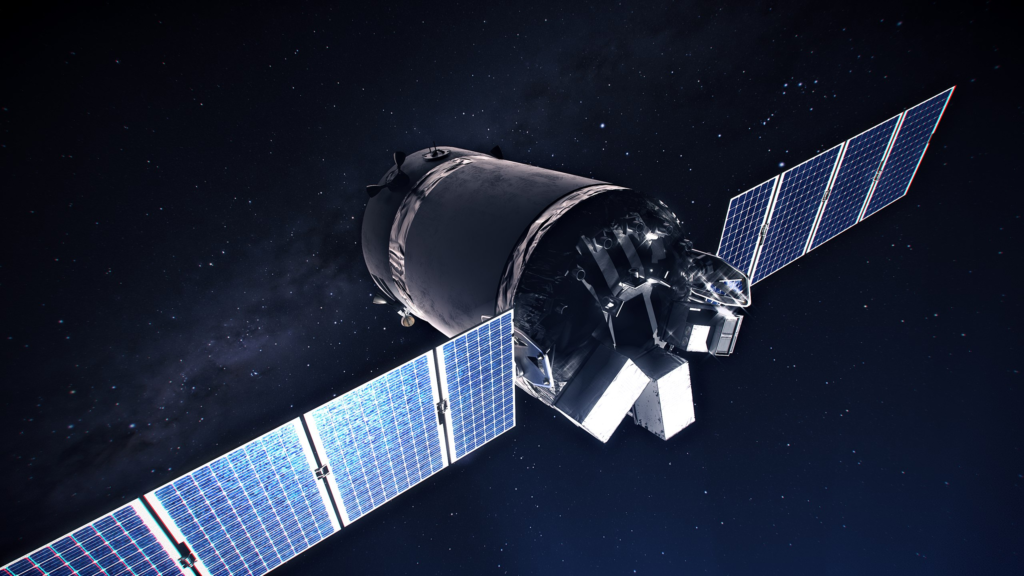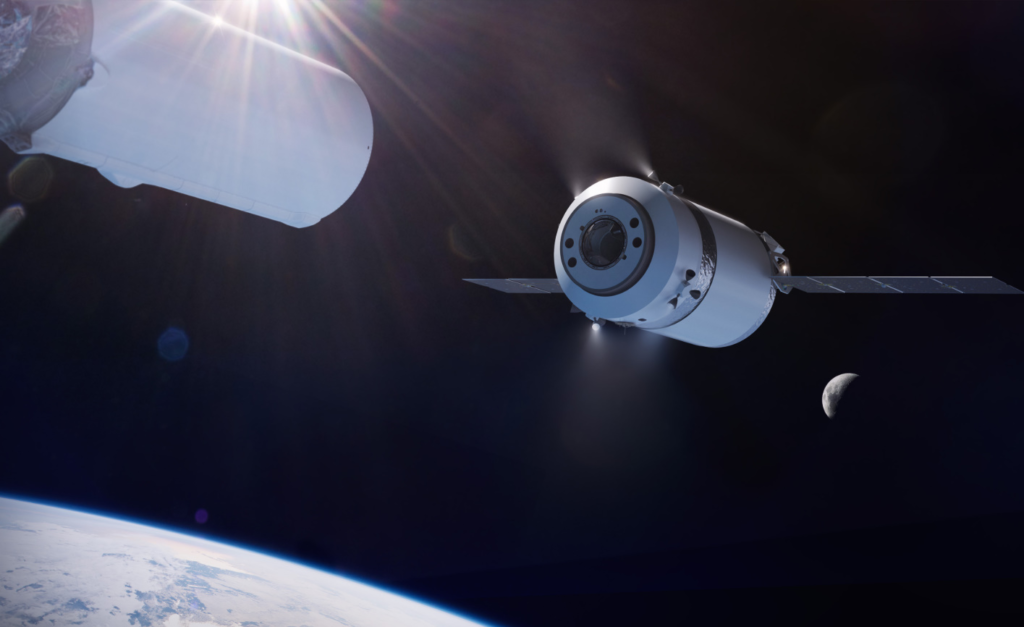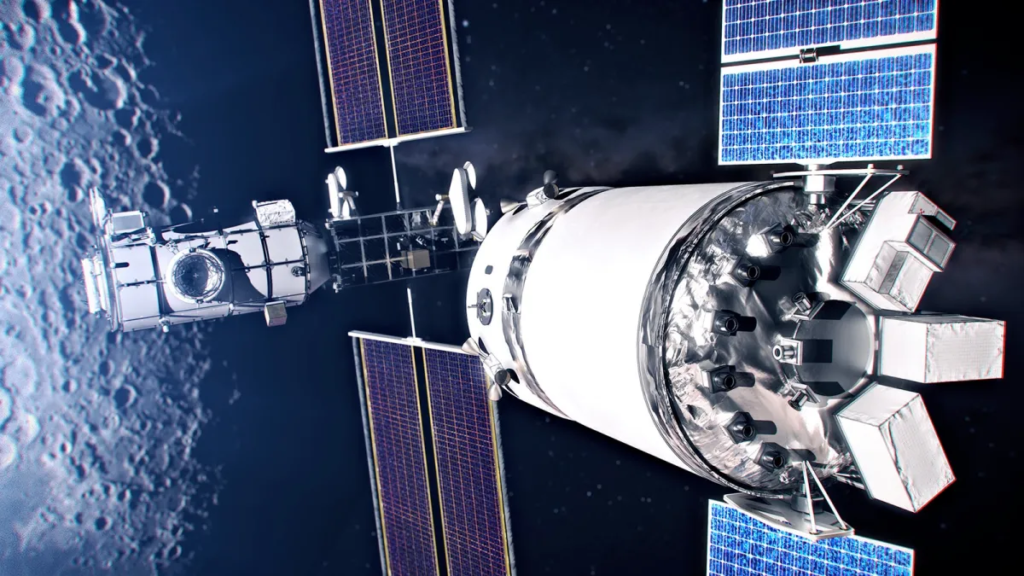
SpaceX’s Dragon Spacecraft Headed For The Moon
Earlier today SpaceX’s Dragon spacecraft docked with the International Space Station carrying 4 crew members. This specific spacecraft is apart of the Dragon 2 class and has been launching crew quite frequently over the past few years. Interestingly, there are a few other variants of Dragon, including one that isn’t even meant to carry a crew.
Back in 2020, NASA selected SpaceX to deliver cargo, experiments, and other supplies to the agency’s Gateway station in lunar orbit. However, due to the distance and amount of cargo required, the company’s standard Dragon spacecraft wouldn’t have the necessary capabilities. We then learned about a new spacecraft under development named Dragon XL.
In the time since this spacecraft’s announcement, it went years without progress as NASA focused on other aspects related to Gateway. On the other hand, recent updates suggest the design will still be used and development will start for eventual missions to the Moon. Here I will go more in-depth into this spacecraft’s design, why it was delayed, its application for future lunar missions, and more.
Dragon XL

Once the Gateway space station is up and running with crew members aboard, it will require supply missions from Earth. Years ago NASA decided that SpaceX would deliver critical pressurized and unpressurized cargo, science experiments and supplies to the Gateway, such as sample collection materials and other items the crew may need on the Gateway and during their expeditions on the lunar surface.
During an actual mission, the spacecraft would launch on Falcon Heavy from LC-39A at the Kennedy Space Center in Florida. The Dragon XL would then stay at Gateway for 6 to 12 months at a time. Its payload capacity is expected to be more than 5,000 kilograms (11,000 lb) to lunar orbit. As for the trip home, there is no requirement for a return to Earth. At the end of the mission the Dragon XL must be able to undock and dispose of the same mass it can bring to the Gateway, by moving the spacecraft to a heliocentric orbit.
At the time, Dan Hartman, Gateway program manager said in a statement, “Bringing a logistics provider onboard ensures we can transport all the critical supplies we need for the Gateway and on the lunar surface to do research and technology demonstrations in space that we can’t do anywhere else. We also anticipate performing a variety of research on and within the logistics module” he said. Financial terms of the contract were not disclosed. The contract is an indefinite delivery, indefinite quantity award, with a total cost value over the entire 15-year program, which could later include other companies, of $7 billion. When this project was announced, most assumed that they would start work right then, and at least develop the new spacecraft. This ended up not being the case at all.
About 1 year after this contract’s announcement in early 2021, we learned that NASA had yet to formally start that contract as it performed a broader review of its Artemis program. Neither NASA nor SpaceX had provided any updates on the contract or the development of the Dragon XL spacecraft.
One NASA official acknowledged at a meeting that, a year after awarding the contract, work on the contract has yet to begin. “We’ve selected SpaceX, and we’re still working on when we’re going to start that contract and all the different details, when we’re even going to be able to work with them on those types of things,” said the manager for mission integration and utilization in the Gateway program, during an April 9 meeting. The agency also said in a statement that, “it has yet to formally authorize SpaceX to proceed on the Gateway Logistics Services contract because the agency is studying the overall schedule of the Artemis lunar exploration program, of which development and use of the Gateway is just one part.”
These various comments and delays brought some doubt as to whether or not this spacecraft would even be created. With so many questions regarding future Gateway dates and deadlines, combined with work on various vehicles, neither NASA nor SpaceX was exactly sure of the future plan.
That was until early this year when we finally got an update on this project. Speaking on a panel at the SpaceCom conference on Feb. 22, the manager of deep space logistics for the Gateway program, said the agency had waited to start work on the first logistics mission as it focused on other aspects of Gateway. He also confirmed that SpaceX will use Dragon XL for those initial missions, but left the door open for using the company’s Starship vehicle for cargo delivery in the future. “We are all for enabling evolution,” he said. “We talked to them about Starship evolution and how it all worked together, but we’re not there yet because it’s still in a development phase” he pointed out.
Future Lunar Missions

In terms of when this spacecraft will be ready, we also got a few hints from the Gateway program manager. He commented that “If you look at the overall Artemis architecture, logistics is the shortest pole in the tent from a development standpoint,”. The contract has a four-year lead time for the first mission, but he suggested SpaceX might be ready faster than that. “We purposely delayed that, turning it on, to make sure we’re not spending money and throwing resources where it doesn’t need to be thrown,” he said.
For reference, the first Artemis mission to use the Gateway will be Artemis 4, currently scheduled for 2028. That means that NASA is preparing to give the go-ahead for that first logistics mission needed to support Artemis 4 this year. “We’re looking forward to ATP’ing that mission this year to enable that 2028 first crewed mission.” He later said that NASA had been working with SpaceX on a series of studies to refine the Dragon XL design and examine cargo configurations and other capabilities that could be enabled by the spacecraft.
Looking at the design based on renders, the spacecraft looks very different from the Dragon spacecraft we are used to. With no need to reenter Earth’s atmosphere and survive, the spacecraft ditched the heat shield and aerodynamic design. Instead, it will be a large cylinder with two deployable solar arrays for power and maximum payload capacity. These will support the spacecraft on its journey to the Moon and once it attaches to the Gateway station.
Gateway will be the first lunar space station comprised of multiple modules from NASA and other agencies. The goal is to provide core functions to keep astronauts healthy and thriving, including pressurized space for crew to prepare for missions to the lunar surface, conduct science, prepare meals, exercise, and rest. Two habitable elements will provide this pressurized space where astronauts can live and work. Starting with Artemis IV, astronauts will “work from home” with the Habitation and Logistics Outpost (HALO) module provided by Northrop Grumman, and integrated in later missions, the International Habitation (I-HAB) module provided by European Space Agency (ESA). Together these habitable elements will enable astronaut stays of 30 days or more around the Moon.
The first foundational habitation element will be HALO and PPE, which will launch together on SpaceX’s Falcon Heavy rocket, in late 2024. In relation to the Dragon XL spacecraft, however, there could be delays on the station’s end. Last month Northrop Grumman said it took a $36 million charge on its contract to build a module for NASA’s lunar Gateway, citing changing mission requirements and broader economic issues.
Specifically, in the company’s fiscal second quarter financial results released July 27, the company announced an unfavorable estimate-at-completion adjustment of $36 million for its work on the Habitation and Logistics Outpost (HALO) module, one of the first elements of the Gateway. The company blamed the charge on “evolving Lunar Gateway architecture and mission requirements combined with macroeconomic challenges” that caused cost growth on the program.
Originally, Northrop received a $935 million fixed-price contract from NASA in July 2021 to build the module, which is based on the company’s Cygnus cargo spacecraft. HALO will provide initial living accommodations on the Gateway and includes several docking ports for visiting Orion spacecraft and lunar landers as well as additional modules provided by international partners. It will also be one of the primary modules that Dragon XL could end up docking to. This being said, the director of business development at Northrop Grumman pointed out that another challenge, “is the lack of experience operating around the moon. “Building a permanent Gateway in cislunar space is a lot harder than it sounds,” he said. “We still have yet to understand the specifics of how to operate and design for cislunar space and the lunar surface.”
These various challenges for NASA and its long list of partners complicate projects like SpaceX’s Dragon XL spacecraft. Dates are almost always changing and getting pushed back due to delays on missions years in advance. While not ideal, the agency is still confident in its plan and is trying to make sure everyone is on time with their respective project. In the coming months, we can expect to hear more about Dragon Xl’s progress and the design of this unique spacecraft.
Conclusion
SpaceX’s Dragon 2 spacecraft has been very successful and supported consistent human missions into low Earth orbit. In addition to this spacecraft, the company is working on a bigger version not meant for crew but instead cargo for lunar missions. We will have to wait and see how it progresses and the impact it has on the space industry.
